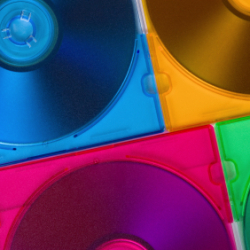
Digital rights management (DRM) — introduced in the mid-1990s as a way to prevent unauthorized access, copying, and conversion of digital content such as music, films, and books — has emerged as a widespread tool to combat piracy. It relies on a sophisticated encryption algorithm to lock data and prevent pirates from copying and distributing it.
So far, however, DRM systems have proved highly inconvenient to consumers who wish to view or listen to content on multiple devices, including computers, media servers, set-top boxes, portable video and audio devices, even phones. They have also proved mostly ineffective in thwarting thieves.
"The last couple of years certainly haven’t been easy ones for mainstream DRM," observes Oren Sreebny, executive director of strategic initiatives at the University of Washington.
So, where is industry headed? Peter Eckersley, staff technologist at the Electronic Frontier Foundation (EFF), says that we’ve entered a period of contradictory trends. "Some industries are abandoning the idea altogether while others are spending more and more money on elaborate and restrictive DRM systems."
In fact, the music industry has watched DRM disintegrate as distribution sites such as Amazon and iTunes have sacked DRM. The music industry realized that many consumers were turning to file-sharing software that allows them to download the same content for free. "The industry was driving honest consumers on to P2P networks," Eckersley observes.
Meanwhile, movie and game producers have moved to more elaborate and expensive architectures with cryptographically sophisticated encryption schemes capable of revoking content for known piratical devices, "traitor tracing" watermarks, hypervisor architectures that obfuscate the DRM code and its defense mechanisms, or make it more difficult for hackers to use arbitrary code execution bugs to gain complete control of a device.
On one side is the EFF, which would like to torpedo DRM. "Vendors are not just persisting with DRM because they expect it to prevent piracy, but because DRM is a way to gain complete control of a technology platform. If everyone who wants to work with the platform has to obtain a license for your DRM, you’re in a position dictate any terms to them," Eckersley says.
Not surprisingly, industry associations such as the Motion Picture Association of America (MPAA) take a different view. The MPAA estimates that the worldwide motion picture industry loses more than $18 billion annually to piracy. Virtually all films and TV shows are distributed illegally, states Jim Williams, MPAA senior vice president and chief technology officer. "The challenge is to continue to offer that content with an ever-evolving digital landscape while at the same time protecting copyrights," he argues.
Consumers, caught in the middle, are increasingly wary of DRM. A confusing tangle of protection schemes has translated into movies, music, and e-books that work on one type of computer or device but not others. Some systems have limited the number of devices on which content can play (rendering the content obsolete, in some cases, as these devices are retired in the future). Other DRM systems do not clearly notify consumers what devices they can play content on and what recording and transfer options they have.
Sreebny believes that DRM is doomed to extinction over the long term — though he predicts that content producers will find ways to embed rights and metadata into files and then track usage and other data for marketing and royalty-based systems. Says Sreebny, "It’s likely we will get to the point where price and convenience make it possible to purchase content online and legally," he says, "thus obviating the need for DRM technology."



Join the Discussion (0)
Become a Member or Sign In to Post a Comment